#tree marcotting
Explore tagged Tumblr posts
Text
Today I found out there's a way to propagate fruit trees that is superior both to grafting and cutting, and I am both mad that I didn't know this before, and crazy excited about trying it out, it's almost like plant magic!
The name of it is Marcotting. It's a great way to save old fruit varieties that are dying! Or if you just have a tree you want a clone of.
So this is what you do. You pick a fruit tree that you want to clone, and you pick a healthy branch, take a knife, and peel a bit of the bark off, only about 1-2cm. Then you take a plastic bag, tape it so it's fastened under the cut, fill it with wet soil, and then tape it again, above the cut. What you did was make sure that the part of the peeled bark is completely surrounded by soil.
You leave that soil bag on the tree for 2 months.
And it will grow roots in there.
Once it grows roots, you can cut that branch off, and plant it. It will grow like a new tree, 100% the same genes, same species, 100% giving you the same fruit.
I'm so insanely excited to try this, most cuttings just die for me, and all trees from seeds either need to be grafted, or will be giving some wild produce, but this is a simple way to gain any fruit tree that you can get away with putting a little bag of soil on for a few months. The varieties that are usually easily propagated this way are citrus, fig, mulberry, and lychee. It takes 6 months for an apple tree to get roots like this!
Here's a link where you can read more about it, and a video where you can see it being done! Go forth and plant those fruit trees. Future generations will prosper from your effort.
#tree propagation#marcotting#where was this information all my life#tree planting#fruit trees#tree marcotting#new valuable information#resources#planting a food forest#this feels like such a magic trick#yes give me more trees#i will do this#air layering
234 notes
·
View notes
Text
The Difference Between Seedling, Grafted and Cutting Grown Fruit Trees
The Difference Between Seedling, Grafted and Cutting Grown Fruit Trees
Fruit trees naturally reproduce themselves from seeds, but most fruit trees that you buy are not produced that way for very good reasons. There are many ways to propagate fruit trees, and each method has its advantages and disadvantages. Whether you propagate fruit trees yourself or buy them from a garden nursery, all fruit are produced by the following methods – they may be grafted, grown from…

View On WordPress
#air layering#grafted trees#grafting#growing fruit trees from cuttings#growing fruit trees from seed#marcotting#monoembryonic seeds#polyembryonic seeds#tree seedlings#true to seed
0 notes
Text
Ouranosaurus nigeriensis
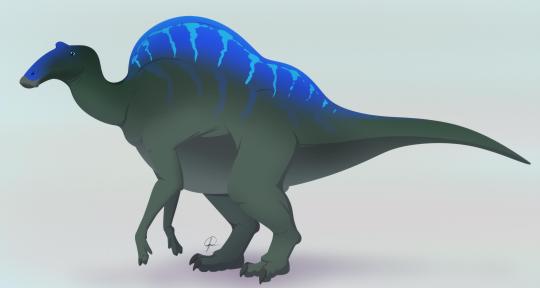
By José Carlos Cortés
Etymology: Brave Reptile of the Sky
First Described By: Taquet, 1976
Classification: Dinosauromorpha, Dinosauriformes, Dracohors, Dinosauria, Ornithischia, Genasauria, Neornithischia, Cerapoda, Ornithopoda, Iguanodontia, Dryomorpha, Ankylopollexia, Styracosterna, Hadrosauriformes
Status: Extinct
Time and Place: Sometime around 112 million years ago, in the Albian age of the Early Cretaceous

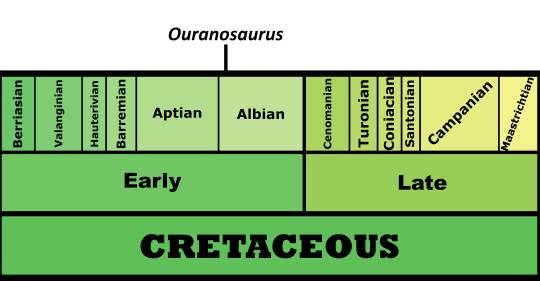
Ouranosaurus is known from the Elrhaz Formation of Agadez, Niger

Physical Description: Ouranosaurus is an exceptionally iconic dinosaur, primarily because of its very weird distinguishing physical feature: it has a sail. Probably. The reason for this idea is that Ouranosaurus had extremely high spines on its back, creating a notable ridge along the center of the animal. These spines become thicker and flatten as they go along the body, and bony (ossified) tendons ran across the spines and the tail. The spines grew biggest over the forelimbs, rather than over the hips. This structure may have been a sail; it also could have been a hump containing muscle or fat - similar to living bison and camels. This would have allowed for the storage of energy during the dry season or another time of year. If a sail, this structure would have been primarily one of display, flashing colors and patterns to communicate with other members of the species. It had very long forelimbs with lightly built hands, which had sharp thumb claws and the middle fingers built into a broad hoof-like structure. In short, it was capable of quadrupedal walking. It had very robust hindlimbs as well, and thus was able to walk bipedally in addition to quadrupedally. Ouranosaurus was quite large, reaching 7 meters in length and weighing somewhere around 2.2 tonnes - despite its length, it was fairly lightly built. With its sail, it was just under 3 meters tall. Being of such large size, it is unlikely that Ouranosaurus retained any fluffy covering; if it did, it was sparse and mainly ornamental.
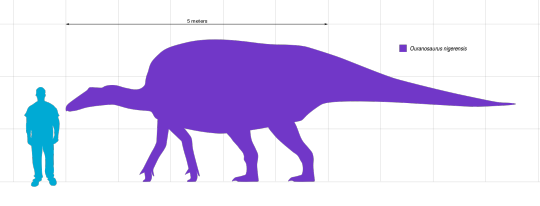
By Slate Weasel, in the Public Domain
It had a very long, flat head, with an even longer snout that greatly surpassed the size of Ouranosaurus’ close relative, Iguanodon. It had a straight beak, rather than a curved one, and no teeth in the front of its snout. The snout also was covered in a sheath of horn, which made it wider and more like something of a beak. This beak was then followed by densely packed batteries of teeth in the cheeks, forming a single surface like those found in the much later Hadrosaurs. The jaws had fairly weak muscles, but this was made up for with a narrow back of the skull, which made the bite ability of the jaws greater to make up for the weak musculature. In short, Ouranosaurus, despite having a very different head than the later Hadrosaurs, was still a strong chewer. Interestingly enough, the eyebrows of Ouranosaurus featured small rounded horns - making Ouranosaurus the only known Ornithopod (Hadrosaurs and their close relatives) with horns. It had highly placed nostrils, and two small bumps between the nose and the eye socket for display.
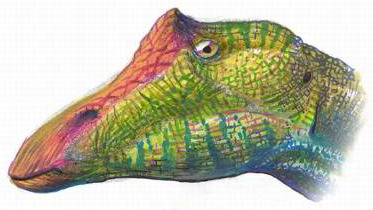
By Pavel Riha CC BY-SA 3.0
Diet: Ouranosaurus primarily fed on leaves, fruit, and seeds, using its chewing to break up tougher plant material and to gain food from it. Given its decent height, Ouranosaurus would have been a mid-level browser.

By Audrey M. Horn, CC BY-SA 4.0
Behavior: Ouranosaurus would have spent most of its time foraging on a variety of plants in its ecosystem, wandering about the river delta searching for leaves, fruits, and other delicious foods. It is fairly unlikely that Ouranosaurus would have been a herding animal, as herds seemed to have been more of a behavior for Ornithopods more closely related to Hadrosaurs; instead, Ouranosaurus probably wandered about its environment alone, or in small family groups. That said, it almost certainly took care of its young in some capacity, and it did have complex social behaviors if the sail was a sail and used for display - and it used those bumps and horns on its head for display as well. It was also probably at least somewhat vocal. As for the spiked thumbs, those could have been used for defense, as well as in-fighting amongst members of the group. It wouldn’t have been a good runner, but it would have moved on two legs when needing to move at least somewhat faster, and stuck to four legs for most movements throughout the day. It probably would have used that narrow head to selectively grab a variety of foods from in between more dense foliage.
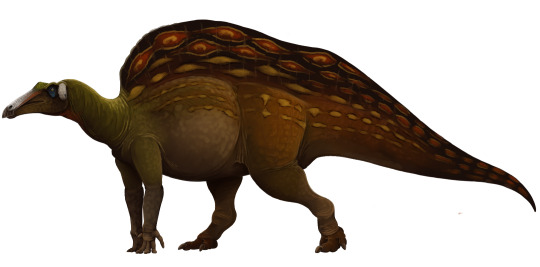
By Scott Reid
Ecosystem: Ouranosaurus lived in an extensive river delta, filled with extensive waterways and wetlands. These wide rivers were home to many animals, including a truly extensive number of dinosaurs. Plenty of trees, including ginkgoes and pines, and some flowering plants, in addition to horsetails and ferns, were present for Ouranosaurus to feed on. There were many types of fish and invertebrates, and the turtle Taquetochelys, but the archosaurs were the main stars of the show. There was the duck-croc Anatosuchus, the giant croc Sarcosuchus, and the running croc Araripesuchus on the Crocodylomorph side of things. There was a weirdo sauropod here too, the duck-billed Nigersaurus, which decidedly does not get enough press. As for other ornithopods, there was the fast-running biped Elrhazosaurus, and a close cousin of Ouranosaurus - Lurdusaurus, an equally-weird creature, with a long neck like a sauropod and the ability to live semi-aquatically in the river system. As for theropods, there was the possible Ornithomimosaur Afromimus, the mid-sized carnosaur Eocarcharia, the Abelisaurid Kryptops, and the spinosaur Suchomimus. You will note that Ouranosaurus did not live with Spinosaurus. This is a misconception. The two did not live together - never, not once, not even close, they are not found in the same place. Spinosaurus (probably) comes from later, and while it seems that it did live that southward, it decidedly did not live in the Elrhaz formation, because its job was being done by Suchomimus. As for predators, Ouranosaurus probably had to mostly watch out for Eocarcharia and Kryptops, as they would have been the main land predators of the area.
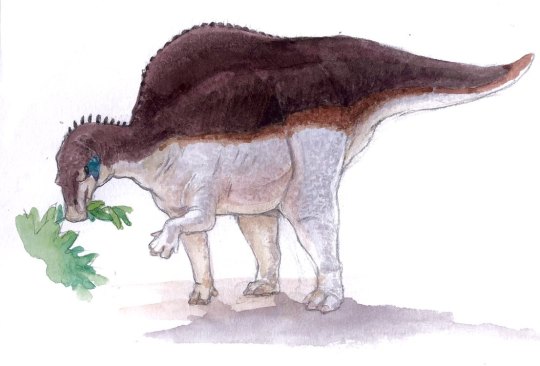
By Ripley Cook
Other: Ouranosaurus, being a Hadrosauriform, was most closely related to one of the more famous Ornithopods, Iguanodon, and shared the thumb spike in common with it. Interestingly enough, Ouranosaurus wasn’t the only hump or sail backed dinosaur at that point of the family tree; Morelladon, which lived much earlier, also supported some sort of odd structure on its back.
~ By Meig Dickson
Sources under the Cut
Bailey, J.B. (1997). "Neural spine elongation in dinosaurs: sailbacks or buffalo-backs?". Journal of Paleontology. 71 (6): 1124–1146.
Benton, Michael J. (2012). Prehistoric Life. Edinburgh, Scotland: Dorling Kindersley. p. 338.
Galton, P. M., and P. Taquet. 1982. Valdosaurus, a hypsilophodontid dinosaur from the Lower Cretaceous of Europe and Africa. Géobios 15(2):147-159
Larsson, H. C. E., and B. Gado. 2000. A new Early Cretaceous crocodyliform from Niger. Neues Jahrbuch für Geologie und Paläontologie - Abhandlungen 217(1):131-141
McDonald, A.T.; Kirkland, J.I.; DeBlieux, D.D.; Madsen, S.K.; Cavin, J.; Milner, A.R.C.; Panzarin, L. (2010). Farke, Andrew Allen (ed.). "New Basal Iguanodontians from the Cedar Mountain Formation of Utah and the Evolution of Thumb-Spiked Dinosaurs". PLoS ONE. 5 (11): e14075.
McDonald, A. T., (2011). "The taxonomy of species assigned to Camptosaurus (Dinosauria: Ornithopoda)" (PDF). Zootaxa. 2783: 52–68.
Palmer, D., ed. (1999). The Marshall Illustrated Encyclopedia of Dinosaurs and Prehistoric Animals. London: Marshall Editions. p. 144.
Paul, G.S. (2010). The Princeton Field Guide to Dinosaurs, Princeton University Press. p. 292.
Sereno, P. C., A. L. Beck, D. B. Dutheil, B. Gado, H. C. E. Larsson, G. H. Lyon, J. D. Marcot, O. W. M. Rauhut, R. W. Sadleir, C. A. Sidor, D. D. Varricchio, G. P. Wilson, and J. A. Wilson. 1998. A long-snouted predatory dinosaur from Africa and the evolution of spinosaurids. Science 282:1298-1302
Sereno, P. C.; H. C. Larsson; C. A. Sidor, and B. Gado. 2001. The giant crocodyliform Sarcosuchus from the Cretaceous of Africa. Science 294. 1516–1519.
Sereno, P. C.; Wilson, J. A.; Witmer, L. M.; Whitlock, J. A.; Maga, A.; Ide, O.; Rowe, T. A. (2007). "Structural extremes in a Cretaceous dinosaur". PLoS ONE. 2 (11): e1230.
Sereno, Paul C., and Stephen L. Brusatte. 2008. Basal abelisaurid and carcharodontosaurid theropods from the Lower Cretaceous Elrhaz Formation of Niger. Acta Palaeontologica Polonica 53. 15–49.
Sereno, P. C., and H. C. E. Larsson. 2009. Cretaceous crocodyliformes from the Sahara. ZooKeys 28:1-143
Sereno, P. C., and S. J. ElShafie. 2013. A New Long-Necked Turtle, Laganemys tenerensis (Pleurodira: Araripemydidae), from the Elrhaz Formation (Aptian–Albian) of Niger. In D. B. Brinkman, P. A. Holroyd, J. D. Gardner (eds.), Morphology and Evolution of Turtles 215-250
Taquet, P., 1970, "Sur le gisement de Dinosauriens et de Crocodiliens de Gadoufaoua (République du Niger)", Comptes Rendus de l'Académie des Sciences à Paris, Série D
Taquet, P. 1976. Geologie et paleontologie du gisement de Gadoufaoua (Aptien du Niger), Cahier Paleont., C.N.R.S. Paris, 1-191
Weishampel, David B.; Dodson, Peter; and Osmólska, Halszka (eds.): The Dinosauria, 2nd, Berkeley: University of California Press. 861 pp.
#Ouranosaurus nigeriensis#Ouranosaurus#Ornithopod#Dinosaur#Prehistoric Life#Paleontology#Prehistory#Palaeoblr#Factfile#Herbivore#Mesozoic Monday#Dinosaurs#Africa#Cretaceous#biology#a dinosaur a day#a-dinosaur-a-day#dinosaur of the day#dinosaur-of-the-day#science#nature
446 notes
·
View notes
Text
NPC Bundle 23: Mellow Monster (Npc Idea)
Here's one for you DM's that just want some friendly monsters in your campaign.
1: A Magmin that is the mascot for a pyrotechnic store (is not allowed to actually go into the store they are marcotting for).
2: A specter which has inexplicitly become passive to everything that would usually cause it to become aggressive. Lives unlife like how an unaggregated specter would.
3: A doppelganger who shaped changed into a doppelganger who had also shaped changed into a doppelganger & that doppelganger had shaped changed into another doppelganger. This has somehow caused the last doppelganger in this chain of doppelganering doppelganger to lose their shape changing ability & has thus just been living life as a passive doppelganger
4: A Nightmare (the horse) who has gained the temperament of a regular horse due to a very skilled horse trainer. It's even learned to not stand or go into tall grass/low hanging tree areas (Due to it being a fire hazard)
5: An ooze which due accidently absorbing to much water, is unable to digest any living being. It is commonly used to as a bonce pad or a pool for weird fit people.
#dnd#d&d#dnd idea#d&d ideas#dnd ideas#d&d idea#Dungeons and Dragons#dungeons & dragons#fanmde#fan made#monster#dnd moster#d&d monster#monsters#mellow#mellow monster#npc#npc bundle#npc idea#specter#magmin#doppelganger#ooze#night-mare#nightmare#idea#ideas#water#temperament#specters
5 notes
·
View notes
Text
Stemmed
Do not just stand there like a tree waiting for it’s dear life to burn to ashes.
Crawl vulnerably like the vines of hope reaching for concrete walls and bamboo stairs.
Bow and sway to the beat of the wind as you are one towering grass that excites the earth.
Grow and expand like how wild bushes flourish in the distance of their feet and time.
Unleash your creativity like how marcots abreed theirs in the span of their exigency.
Commit with humility like a bonsai that extends its depths but remains a beautiful example of humble champions.
6 notes
·
View notes
Photo

Okay, here we go—I made my first attempt at marcotting (air layering) today on two very old Trichilia emetica trees I’ve had from when I lived in NYC a long time ago. The procedure involves carefully stripping off a section of the top layer of bark, applying root hormone powder to the exposed tissue, and gently compacting moist sphagnum moss around it for the developing roots to grow into. The hormone-treated exposed parts in the moss are in vertically-sliced, upside-down water bottles, fastened with jute twine. The bottle bottoms were removed to allow for aeration, and so I can reapply water to keep the moss moist. Excess water will drip out where the bottle lids used to be. I wrapped aluminum foil around them so the developing roots “think” they’re growing underground. They were absolutely gorgeous back in their day and I can’t throw them out just because they didn’t age well. It’s partially my fault, as I’ve been very passive with them; and I meant to do all this earlier in spring, but late summer is okay too. I expect them to root by mid-October. Then I’ll cut them off their parent trees, pot them up, and have new rooted trees with a fresh start! #plantpropagation #marcotting #airlayeringpropagation #airlayering #trichiliaemetica #natalmahoganytree #tropicalplants #foliageplants #plantsplantsplants #grow #makenewplantsforfree #secondchance #freshstart #plantwork #gardening #horticulturetherapy (at 02169) https://www.instagram.com/p/CE3Co3ag3hx/?igshid=1qei9a5kfd7vn
#plantpropagation#marcotting#airlayeringpropagation#airlayering#trichiliaemetica#natalmahoganytree#tropicalplants#foliageplants#plantsplantsplants#grow#makenewplantsforfree#secondchance#freshstart#plantwork#gardening#horticulturetherapy
0 notes
Photo

Marcotted two branches of my rubber tree. Weeeeh! See you in two months root ball. #horticulture #urbangardening #urbangarden #urbanjungle #halamom #plantita #plantamad #balete #figtree #ficuselastica https://www.instagram.com/p/CEJmYVWlws2CYNDO7I6dht4O9ZE4lOQadJZn8o0/?igshid=1x482uu0xkpup
#horticulture#urbangardening#urbangarden#urbanjungle#halamom#plantita#plantamad#balete#figtree#ficuselastica
0 notes
Text
A Fruit which was favorited by Yang Guifei
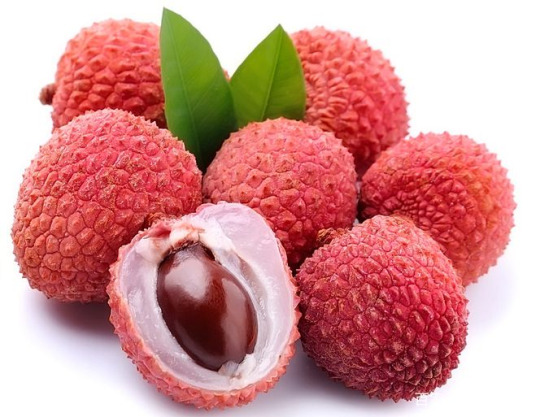
(Picture resource: https://mbd.baidu.com/newspage)
It is widely known that litchi is Yang Guifei’s favorite fruit in China and is distributed in the southwest, south and southeast of China, which is not common to see them in America while Guangdong and Fujian are the most cultivated place in China, so it is a popular fruit in the folk. Today, I’m going to talk about the appearance, cultivation and usages of litchi.
Normally, it is a tall evergreen tree with small fleshy fruits. The outside of the fruit is pink-red, roughly textured and inedible, covering sweet flesh eaten in many different dessert dishes.
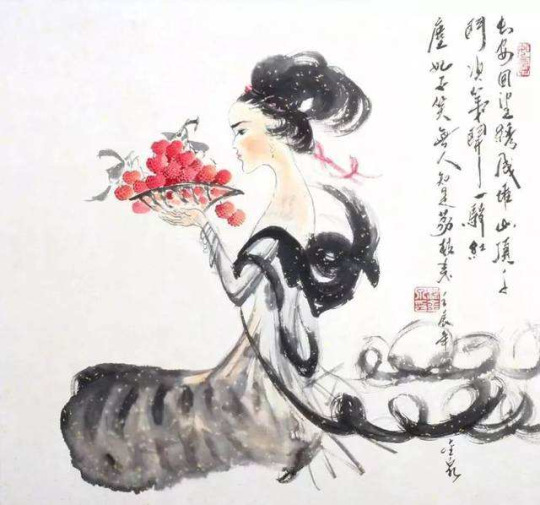
(Picture resource: http://m.sohu.com/a/234735966_756222?_f=m-article_8_feeds_10) Litchi is a specialty of the south of China. In ancient times, the transportation conditions storage equipment is very backward, most of the litchi were rotten after sipped to the north with the long period of time. Only using fast horse with whip to make litchi as fresh as possible and retain the original taste. In the north, only the rich and powerful can afford a bite of the litchi.。 The cultivate of litchi requires a tropical climate that is frost free and is not below the temperature of -4 °C. It also requires a climate with high summer heat, rainfall, and humidity. With the best well-drained, slightly acidic soils, it can grow better, rich in organic matter and mulch. A wide range of cultivars are available, with early and late maturing forms suited to warmer and cooler climates, respectively. They are also grown as an ornamental tree, as well as for their fruit. The most common way of propagating lychee is through a method called Air Layering or Marcotting. In addition, with the wood of Litchi is solid and can resistant the corrosion. it has always been a first-class material. Guangdong makes wild or semi-wild litchi wood as special class, cultivation litchi wood as first class to mainly used for shipbuilding, beam, column, first- class furniture, which makes litchi full of economic value.

(Picture resource: http://blog.sina.com.cn/s/blog_5072b0910100alxs.html)
(Article resource: https://hort.purdue.edu/newcrop/morton/lychee.html)
0 notes
Video
youtube
Air Layer a young Baobab tree
0 notes
Text
Agri-trade fair opens today in E. Samar
#PHinfo: Agri-trade fair opens today in E. Samar
BORONGAN CITY. Nov 4 (PIA)—An agri-trade fair opened on November 4, 2019 at the E. Samar Capitol Grounds, Borongan City.
The agri-trade fair teems of fresh farm products from veggies and fruits to processed food like danggit, dried sapsap, puto, ready-to-eat food, home décor, even Christmas lanterns reportedly made by the inmates of the E. Samar Provincial Jail, marcotted fruit trees and ornamental plants.
The event is in line with the province's 54th founding anniversary.
In his message, Governor Ben Evardone urged the OFWs to purchase through their friends here in the Philippines and give the E. Samar products as gifts to their employers.
He also addressed to the exhibitors to make their products of best quality and employ attractive pacakging.
"We need you to grow, to expand your reach, to break open in the international market."
The lone representative to Congress, Rep. Maria Fe Abunda purchased some seaweed noodles with malunggay as gifts to her fellow representatives.
The lawmaker also praised the tarucog (armored sea leech) chicharon as a unique cuisine worthy of sharing to non-Estehanons.
The Department of Trade and Industry Provincial Head Ruthelma Samonte, also praised the provincial government for the support to the trade fairs saying, "there are new products that need the government support, exposure and promotion."
In the agri-fishery summit that ensued, Regional Executive Director of the agriculture department Milo delos Reyes urged the farmers and the government employees to draft a Provincial Agriculture Development Plan to ensure that all agriculture and fishery sectors are given livelihood opportunities.
He also told them that the department has many programs that they can avail, like the National Rice program, Corn Production, High Value Crops Production, Livestock Programs, Farm-to-Market road and Special Areas for Agriculture Development (SAAD).
Diosdado Cristo of San Julian town, president of the Canbatong Fisherfolk Association said that he came to ask the Bureau of Fisheries and Aquatic Resources (BFAR) to give support to his 36 members who are engaged in deep-sea fishing to earn better income.
During the program, the officials also pledged to support the agriculture and fishery sectors through their pledge of commitment to empower and support the small farmers and fisherfolks through towards a better yield and better income.
The farmers and fisherfolks also looked forward to a raffle draw of veterinary items.
Around a thousand farmers and fisherfolks attended the summit. (nbq)
***
References:
* Philippine Information Agency. "Agri-trade fair opens today in E. Samar." Philippine Information Agency. https://pia.gov.ph/news/articles/1029633 (accessed November 04, 2019 at 03:07PM UTC+08).
* Philippine Infornation Agency. "Agri-trade fair opens today in E. Samar." Archive Today. https://archive.ph/?run=1&url=https://pia.gov.ph/news/articles/1029633 (archived).
0 notes